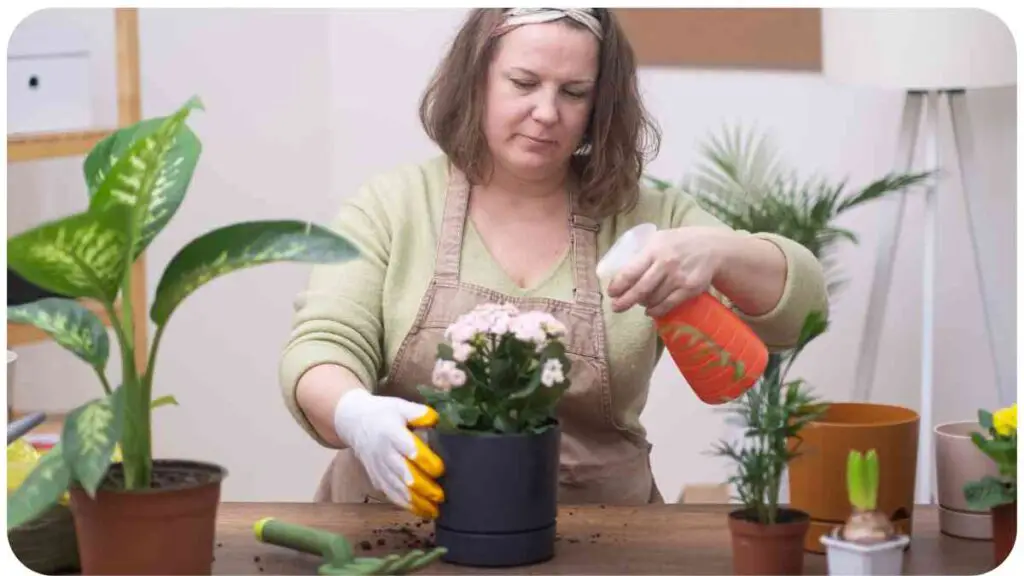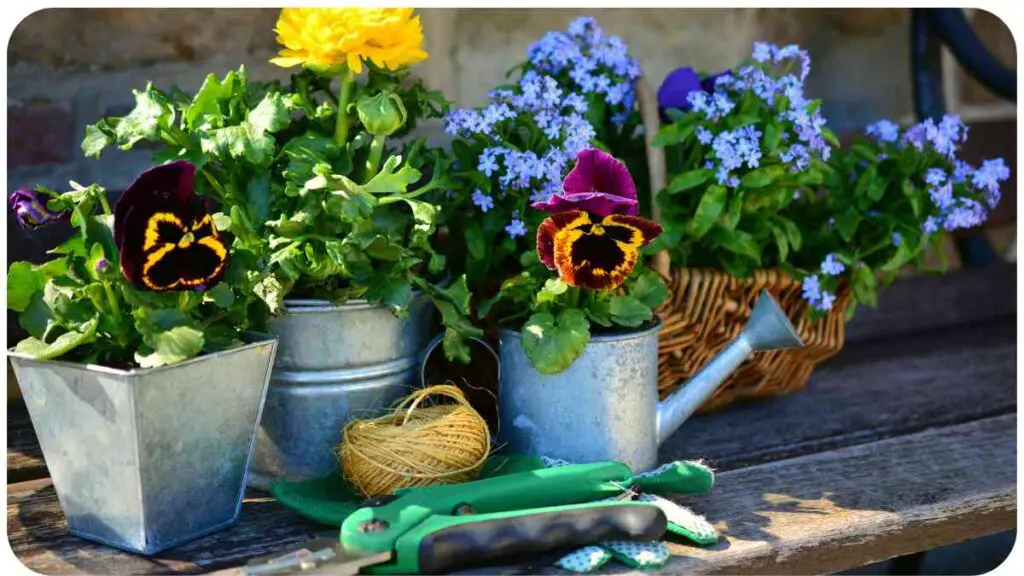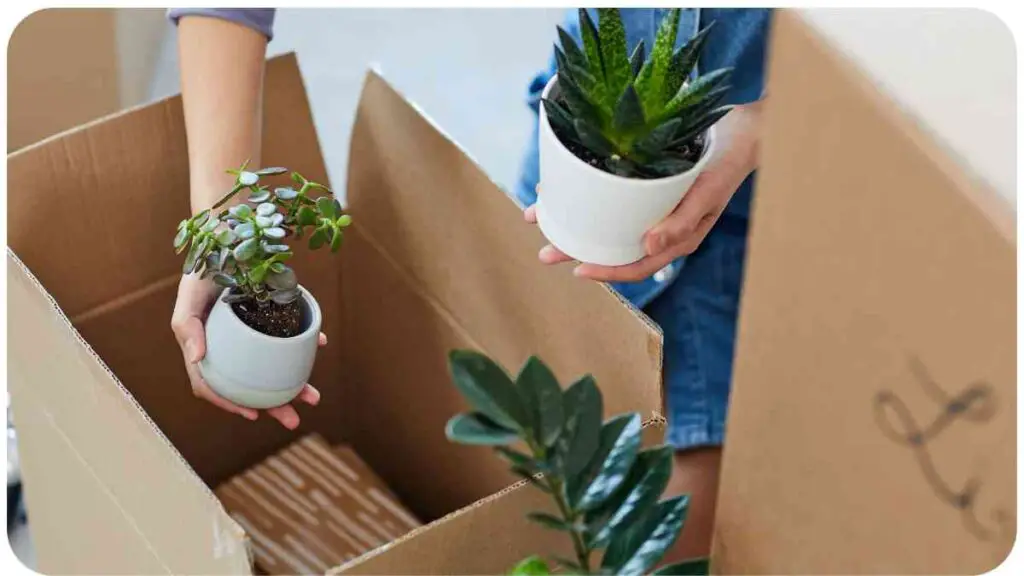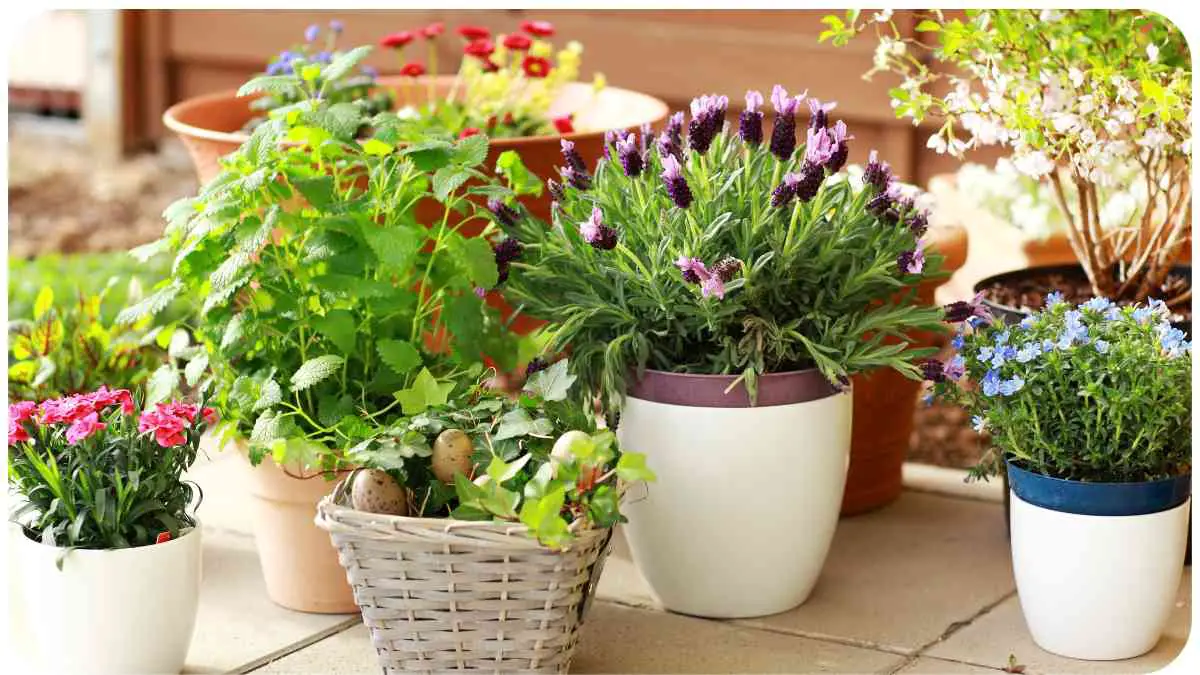Moving to a new home is an exciting journey, but it can be stressful when it comes to transporting delicate items like potted plants. Whether you’re relocating across the city or across the country, ensuring your leafy companions survive the journey requires careful planning and execution.
In this comprehensive guide, we’ll walk you through the process of packing potted plants for a move, offering expert tips, practical advice, and solutions to common challenges along the way.
| Key Takeaways |
|---|
| 1. Properly assessing your plants is crucial before packing. |
| 2. Gathering the right packing supplies ensures a smooth process. |
| 3. Packing small and large potted plants requires different methods. |
| 4. Labeling and organizing your packed plants simplifies unpacking. |
| 5. Transporting plants safely involves minimizing stress and providing proper ventilation. |
| 6. Unpacking and reacclimating plants requires care and monitoring. |
| 7. Troubleshooting common issues like wilting or pest infestations promptly ensures plant health. |
| 8. Additional resources and expert tips can provide further guidance. |
Assessing Your Plants

Before diving into the packing process, take stock of your potted plants. Assess their size, type, and health to determine the best packing methods for each. Some plants may require special care or accommodations during transit, so it’s essential to know what you’re dealing with before you start packing.
Preventing root rot is crucial for maintaining the health of your indoor plants. Ensure proper drainage and avoid overwatering to keep them thriving. Learn more about preventing root rot in our comprehensive guide.” Comprehensive Guide
Gathering Packing Supplies
To pack your potted plants effectively, you’ll need the right supplies on hand. Here’s a handy table outlining the recommended packing supplies:
| Packing Supplies | Description |
|---|---|
| Cardboard boxes | Various sizes for different plant sizes |
| Packing paper or bubble wrap | Cushioning material to protect plants |
| Packing peanuts | Filling material for added protection |
| Plant tape or twine | Securing plants and pots during transit |
| Marker or labels | To identify plants and their care instructions |
These supplies will help safeguard your plants against bumps, jostles, and other hazards during the moving process.
Preparing Plants for Packing
Proper preparation is key to ensuring your potted plants arrive at their new home unscathed. Before packing, take the following steps to prepare your plants:
- Water your plants a day or two before packing to ensure they’re hydrated but not overly wet.
- Prune any dead or damaged leaves, branches, or flowers to promote healthy growth post-move.
- Repot plants if necessary to ensure they’re in stable containers for transport.
- Check for pests and treat any infestations before packing to prevent spreading them to your new home.
Knowing when to repot your houseplants is essential for their continued growth and health. Understanding the signs and timing can help you provide the best care for your plants. Find out more about repotting in our informative guide.” Repot My Houseplants
By preparing your plants in advance, you’ll set them up for a smoother transition to their new environment.
Recommended Packing Supplies
In this table, we’ve listed the essential packing supplies you’ll need to prepare your potted plants for moving:
| Packing Supplies | Description |
|---|---|
| Cardboard boxes | Various sizes for different plant sizes |
| Packing paper or bubble wrap | Cushioning material to protect plants |
| Packing peanuts | Filling material for added protection |
| Plant tape or twine | Securing plants and pots during transit |
| Marker or labels | To identify plants and their care instructions |
Choosing the Right Packing Method
When it comes to packing potted plants, one size does not fit all. Depending on the size, type, and fragility of your plants, you’ll need to choose the appropriate packing method to ensure their safety during transit.
For small potted plants, you have the option of individually wrapping each plant or placing multiple plants together in a larger box with dividers for added protection. Larger potted plants may require special handling, such as securing them to prevent tipping or damage to their foliage.
Packing Small Potted Plants
Small potted plants are relatively easy to pack, but they still require care to prevent damage during the move. Here’s a step-by-step guide to packing small potted plants:
- Wrap Each Plant: Gently wrap each plant in packing paper or bubble wrap, securing it with plant tape or twine to keep the wrapping in place.
- Secure in Boxes: Place the wrapped plants in appropriately sized cardboard boxes, ensuring they fit snugly to prevent shifting during transit.
- Fill Empty Spaces: Fill any gaps in the boxes with packing peanuts or crumpled paper to provide cushioning and prevent the plants from moving around.
- Label Boxes: Clearly label each box with the contents and indicate which way is up to ensure proper handling.
Choosing the right sprays for your indoor plants can help protect them from pests and diseases while promoting healthy growth. Explore our comprehensive guide to learn about safe and effective spraying methods.” Spray on Indoor Plants
Packing Small Potted Plants
| Step | Description |
|---|---|
| Wrap Each Plant | Gently wrap each plant in packing paper or bubble wrap and secure with plant tape or twine. |
| Secure in Boxes | Place wrapped plants in appropriately sized cardboard boxes, ensuring they fit snugly to prevent shifting. |
| Fill Empty Spaces | Fill gaps in boxes with packing peanuts or crumpled paper to provide cushioning and prevent movement. |
| Label Boxes | Clearly label boxes with contents and indicate which way is up to ensure proper handling during transit. |
Following these steps will help ensure your small potted plants arrive at your new home intact and ready to thrive.
Packing Large Potted Plants
Packing large potted plants requires a bit more effort and consideration due to their size and weight. Here’s how to pack large potted plants for a move:
- Secure Pot and Foliage: Use plant tape or twine to secure the foliage and pot to prevent movement during transit.
- Add Cushioning: Place a layer of packing peanuts or crumpled paper in the bottom of a sturdy cardboard box to provide cushioning.
- Position Plant: Carefully lower the plant into the box, ensuring it’s centered and stable.
- Fill Empty Spaces: Fill any remaining gaps in the box with packing peanuts or crumpled paper to prevent shifting.
- Label Box: Clearly label the box with the contents and indicate which way is up for proper handling.
Packing Large Potted Plants
| Step | Description |
|---|---|
| Secure Pot and Foliage | Use plant tape or twine to secure foliage and pot to prevent movement during transit. |
| Add Cushioning | Place a layer of packing peanuts or crumpled paper in the bottom of a sturdy cardboard box for cushioning. |
| Position Plant | Carefully lower the plant into the box, ensuring it’s centered and stable. |
| Fill Empty Spaces | Fill remaining gaps in the box with packing peanuts or crumpled paper to prevent shifting during transit. |
| Label Box | Clearly label the box with contents and indicate which way is up for proper handling during transit. |
By following these steps, you can safely transport your large potted plants to your new home without risking damage to their foliage or roots.
Praying mantises can be beneficial allies in your indoor garden, helping to control pests naturally without the use of harmful chemicals. Discover how these fascinating insects can contribute to the health of your plants.” Praying Mantis Good
Labeling and Organizing
Properly labeling and organizing your packed potted plants is crucial for a smooth moving process and easy unpacking at your new home. Without clear labeling, you may find yourself guessing which box contains which plant, leading to unnecessary stress and potential damage during unpacking.
Here are some tips for labeling and organizing your packed plants:
- Create a Packing List: Before you start packing, create a packing list that includes the names of each plant and any special care instructions. This will help you keep track of your plants and ensure they receive the proper care during transit.
- Use Clear Labels: Label each box with the name of the plant or plants it contains, as well as any special care instructions. Use a permanent marker or labels that won’t smudge or fade during transit.
- Indicate Fragility: If any of your plants are particularly fragile or sensitive to temperature changes, be sure to indicate this on the box. This will alert movers or anyone handling the boxes to handle them with extra care.
- Organize by Room: When packing your plants, organize them by room to make unpacking easier. For example, group all the plants destined for the living room together and label the boxes accordingly.
- Keep Essential Supplies Handy: Pack a separate box or bag with essential supplies such as watering cans, plant food, and pruning shears. This will ensure you have everything you need to care for your plants as soon as you arrive at your new home.
Transporting Potted Plants Safely

Transporting potted plants safely requires careful planning and consideration, especially if you’re moving long distances or across state lines. Here are some tips to ensure your plants arrive at their destination in good condition:
- Avoid Extreme Temperatures: Try to avoid exposing your plants to extreme temperatures during transit, as sudden changes in temperature can shock them and cause damage. If moving during hot weather, consider transporting your plants in an air-conditioned vehicle.
- Provide Adequate Ventilation: Ensure your plants have adequate ventilation during transit to prevent them from overheating or suffocating. Avoid sealing them in airtight containers or wrapping them too tightly in plastic.
- Secure Plants in Vehicle: If transporting your plants in a vehicle, secure them in place to prevent them from shifting or tipping over during transit. Use seat belts or straps to hold them in place and prevent damage to their foliage or pots.
- Check Local Regulations: If you’re moving across state lines or internationally, check local regulations regarding the transportation of plants. Some plants may be subject to quarantine or other restrictions to prevent the spread of pests and diseases.
- Minimize Handling: Try to minimize the amount of handling your plants receive during transit to reduce the risk of damage. Avoid stacking heavy boxes on top of delicate plants and handle them with care when loading and unloading.
By following these tips, you can ensure your potted plants arrive at your new home safe and sound, ready to brighten up your living space.
Next, let’s discuss the process of unpacking and reacclimating your plants to their new environment.
Tiny bugs in houseplants can be a nuisance, but they’re not uncommon. Understanding why they appear and how to deal with them can help you keep your indoor garden healthy and thriving. Learn more in our comprehensive guide.” Tiny Bugs in Houseplants
Unpacking and Reacclimating Plants

Unpacking and reacclimating your potted plants to their new environment is a critical step in ensuring their health and vitality post-move. Here’s how to unpack and reintroduce your plants to their new home:
- Unpack with Care: When unpacking your plants, handle them with care to avoid damaging their foliage or roots. Gently remove them from their boxes and unwrap any protective covering, taking care not to disturb the soil or roots.
- Inspect for Damage: Take a moment to inspect each plant for any signs of damage or stress during transit. Look for broken branches, wilted leaves, or signs of pest infestation, and address any issues promptly.
- Water Thoroughly: Once unpacked, give your plants a thorough watering to help them recover from the stress of the move. Check the soil moisture level and water as needed, being careful not to overwater or drown the roots.
- Provide Adequate Light: Place your plants in their new locations where they’ll receive the appropriate amount of sunlight for their species. Avoid placing them directly in harsh sunlight or drafty areas, as this can cause stress and damage to the foliage.
- Monitor for Signs of Stress: Keep a close eye on your plants in the days and weeks following the move for any signs of stress or adjustment issues. Look for yellowing leaves, drooping foliage, or wilting, and adjust their care as needed to help them acclimate.
- Resume Regular Care: Once your plants have had time to settle into their new environment, resume their regular care routine. This may include watering, fertilizing, pruning, and repotting as needed to keep them healthy and thriving.
Troubleshooting Common Issues
Despite your best efforts, it’s not uncommon to encounter some issues when unpacking and reacclimating your potted plants after a move. Here are some common problems you may encounter and how to address them:
- Wilting or Drooping Leaves: If your plants are showing signs of wilting or drooping, they may be experiencing stress from the move. Give them a thorough watering and place them in a shaded area to recover.
- Yellowing Leaves: Yellowing leaves can be a sign of overwatering, underwatering, or nutrient deficiencies. Check the soil moisture level and adjust your watering schedule accordingly. Consider fertilizing your plants to replenish any nutrients they may be lacking.
- Pest Infestations: If you notice signs of pest infestation, such as small insects, webs, or sticky residue on the leaves, take action immediately to address the problem. Remove any affected leaves or stems, and treat the plant with insecticidal soap or neem oil to eliminate pests.
- Root Rot: Root rot can occur if your plants are overwatered or if they’re sitting in waterlogged soil for an extended period. If you suspect root rot, gently remove the plant from its pot and inspect the roots for signs of rot. Trim away any affected roots and repot the plant in fresh, well-draining soil.
- Transplant Shock: Some plants may experience transplant shock after being moved to a new environment. This can manifest as wilting, drooping, or yellowing leaves. Give your plants time to acclimate to their new surroundings, and provide them with proper care to help them recover.
By addressing these common issues promptly and providing your plants with the care and attention they need, you can help them thrive in their new home.
In the next section, we’ll cover some frequently asked questions about packing potted plants for a move, along with expert tips from experienced plant enthusiasts and movers.
Conclusion
Packing potted plants for a move can be a daunting task, but with the right preparation and care, you can ensure your leafy companions arrive at their new home safe and sound. By assessing your plants, gathering the necessary packing supplies, and following proper packing techniques, you can minimize the risk of damage during transit.
Labeling and organizing your packed plants, transporting them safely, and unpacking them with care are essential steps in the moving process. By providing your plants with the proper care and attention they need to acclimate to their new environment, you can help them thrive in their new home.
Remember to monitor your plants closely for signs of stress or adjustment issues and address any problems promptly. With a little patience and TLC, your potted plants will settle into their new surroundings and continue to bring beauty and joy to your living space for years to come.
If you have any questions or need further assistance with packing your potted plants for a move, don’t hesitate to reach out to a professional mover or gardening expert for guidance.
FAQs
Q: Can I pack my potted plants in the same boxes as my other belongings?
A: It’s best to pack your potted plants separately to avoid damaging them or your other belongings. Use sturdy cardboard boxes and packing materials designed specifically for plants.
Q: How do I prevent my plants from getting damaged during transit?
A: Proper packing techniques, such as securing the pots and foliage, providing cushioning, and avoiding extreme temperatures, can help minimize the risk of damage during transit.
Q: Should I repot my plants before moving?
A: If your plants are in unstable or oversized pots, consider repotting them into more secure containers before moving to prevent breakage or damage.
Q: Can I transport my potted plants in a moving truck?
A: Yes, you can transport your potted plants in a moving truck, but be sure to secure them properly to prevent tipping or damage during transit.
Q: How long will it take for my plants to adjust to their new environment?
A: The adjustment period for plants can vary depending on factors such as species, environmental conditions, and the stress of the move. With proper care and attention, most plants will acclimate within a few weeks.
Expert Tips for Plant Packing
To ensure a smooth and successful move for your potted plants, here are some expert tips from experienced gardeners and movers:
- Provide Adequate Cushioning: Use plenty of packing materials such as bubble wrap, packing paper, or foam peanuts to cushion your plants and prevent them from shifting during transit.
- Label Boxes Clearly: Clearly label each box with the name of the plant and any special care instructions to ensure they receive the proper care during unpacking.
- Avoid Overwatering: While it’s essential to keep your plants hydrated during transit, avoid overwatering them as this can lead to waterlogged soil and root rot.
- Monitor Temperature: Keep an eye on the temperature during transit and avoid exposing your plants to extreme heat or cold, as this can stress them and cause damage.
- Handle with Care: When loading and unloading your plants, handle them with care to avoid damaging their foliage or roots. Use straps or seat belts to secure them in place during transit.
With these expert tips and proper planning, you can ensure a smooth and stress-free move for your beloved potted plants.
Further Reading
Here are some additional resources to help you learn more about packing and moving potted plants:
- Metro Movers: How to Pack Plants When Moving Home: This comprehensive guide offers step-by-step instructions and tips for safely packing and moving your potted plants.
- Forbes: How to Pack Houseplants for a Move: Forbes provides expert advice on packing houseplants for a move, including tips for minimizing stress and ensuring your plants arrive safely.
- Angi: How to Pack Plants for Moving: This article from Angi offers practical tips and techniques for packing plants for a move, including advice on choosing the right packing materials and handling fragile plants with care.
FAQs
Here are some frequently asked questions about packing and moving potted plants:
How do I choose the right packing materials for my plants?
When packing potted plants for a move, it’s essential to choose the right packing materials to ensure they arrive safely at their destination. Opt for sturdy cardboard boxes, packing paper or bubble wrap for cushioning, and packing peanuts or crumpled paper to fill empty spaces and prevent shifting during transit.
Can I transport my plants in my personal vehicle?
Yes, you can transport your potted plants in your personal vehicle, but it’s essential to secure them properly to prevent damage during transit. Use seat belts or straps to hold them in place and avoid stacking heavy boxes on top of delicate plants.
How should I prepare my plants for a long-distance move?
Before a long-distance move, it’s essential to prepare your plants properly to ensure they survive the journey. Water them thoroughly a day or two before the move to ensure they’re hydrated but not overly wet, and prune any dead or damaged leaves or branches to promote healthy growth.
What should I do if my plants show signs of stress after the move?
If your plants show signs of stress, such as wilting or yellowing leaves, after the move, don’t panic. Give them time to acclimate to their new environment and provide them with proper care, including adequate sunlight, water, and fertilizer, to help them recover.
Can I ship my plants to my new home?
Yes, you can ship your potted plants to your new home, but it’s essential to research the shipping company’s policies and procedures for transporting live plants. Make sure to pack your plants securely and label the boxes clearly to ensure they arrive safely at their destination.

For 15 years, Hellen James has worked in the gardening industry as an expert and landscape designer. During her career, she has worked for a variety of businesses that specialize in landscaping and gardening from small firms to large corporations.

